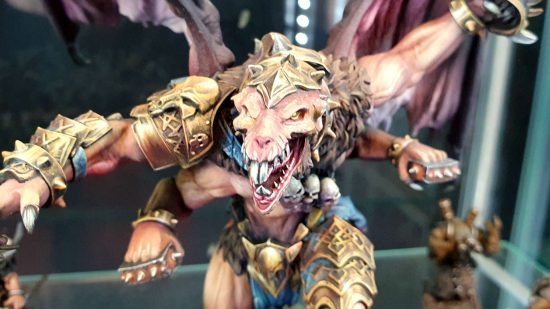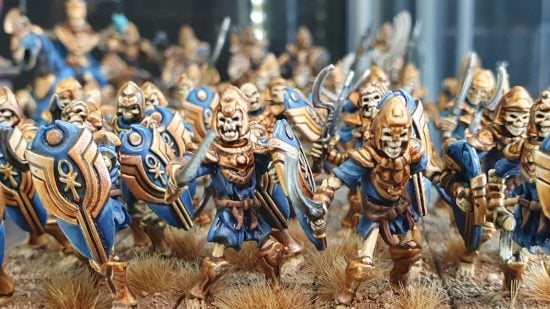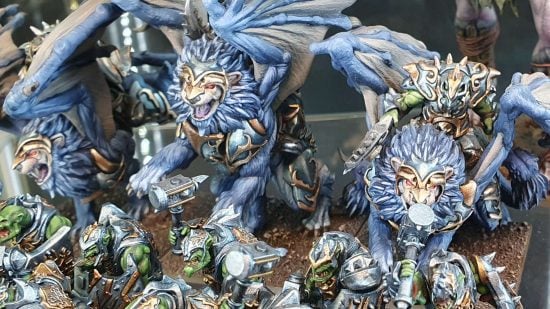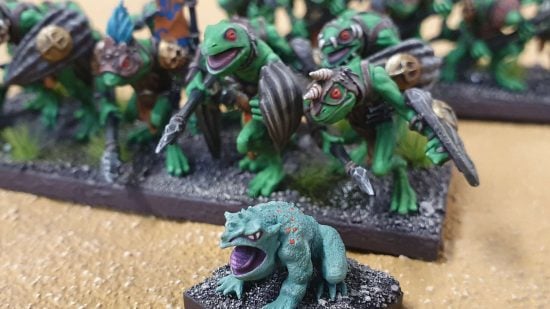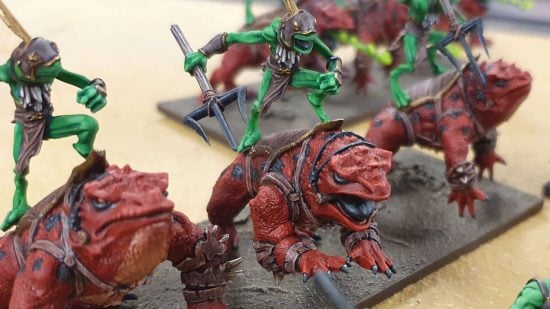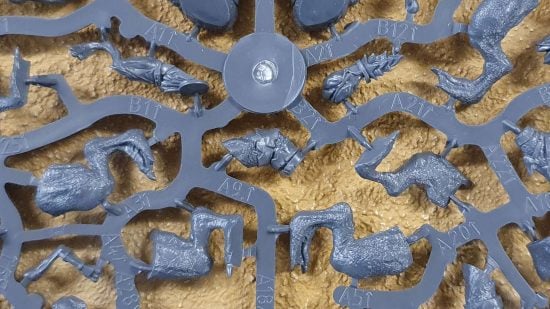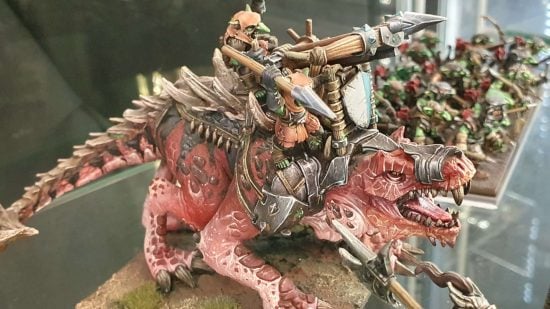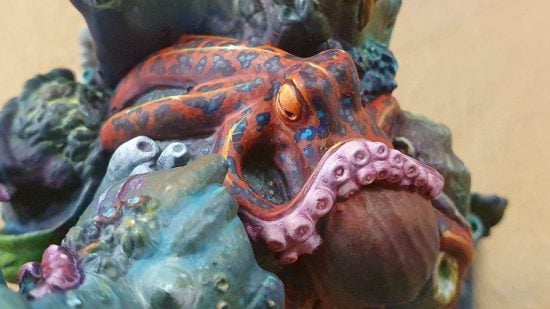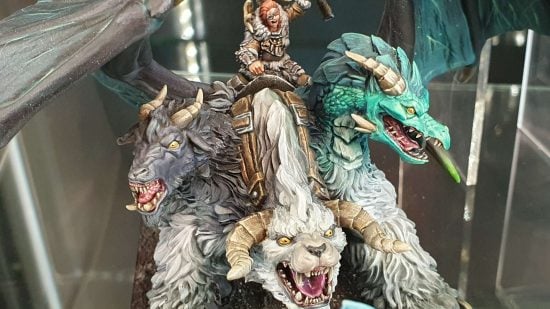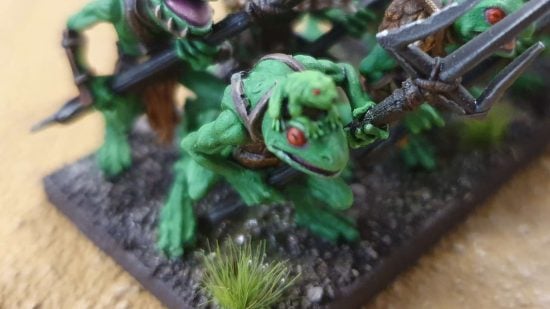Mantic Games launched Kings of War in 2009 with an army of plastic Elves and a simple selling point: these fantasy models were much cheaper than the equivalent Warhammer minis being sold by Games Workshop. Visiting Mantic’s HQ in Nottingham, UK, Wargamer learnt how the firm and its flagship game have grown beyond those humble origins.
Mantic is in a period of expansion, having just added five staff to various teams – though there are still fewer than 30 full timers. Some things haven’t changed: the release of Warhammer: The Old World has seen a spike in sales for Mantic’s ‘Empire of Dust’ miniatures, as Games Workshop’s stock problems send fans in search of stand in models for Tomb Kings of Khemri armies. But Mantic’s own fantasy wargame, Kings of War, is highly successful in its own right.
Ex-GW designer Alessio Cavatore wrote the first version of the Kings of War rules in 2010, not long after leaving Games Workshop. Mantic Games founder Ronnie Renton recalls how Cavatore had already “worked on several editions of 40k and Warhammer fantasy” and was a thoroughly accomplished designer by the time Mantic brought him in for the project. Renton gave him a simple mission: “Write a super clean set of fantasy rank and flank rules, starting from scratch”.
The setting and rules plundered everything “from the Roman period up to black powder” for historical inspiration, and then layered classic fantasy tropes, heroes, and magic on top. While the early releases took plenty of inspiration from Tolkien, Kings of War has long since stretched beyond that, with 28 army lists in total, establishing an aesthetic of its own.
So while the Forces of Nature army list includes a Tolkienesque treeman, it marches to war alongside elementals, naiads, lizard people, and other elements of the primal wild. The Riftforged Orcs aren’t a rabble like Warhammer Orcs, but veterans who fought their way out of hell, and get to ride winged lions for their trouble. The Trident Realm is a fully aquatic fantasy alliance, and predates the Idoneth Deepkin by years.
Marketing manager Dan Mapleston shows off test sprues for new plastic Kings of War Riverguard models, frogmen armed with javelins and spears, some of them riding even bigger frogs. The new plastic kits replace metal models first released in 2017.
“As far as I know, no-one else makes frog cavalry riding on other, bigger frogs” Mapleston says. He points to a tiny frog sitting on the head of a frog infantryman: “The heads are interchangeable, so you can put that onto a cavalry model and have a frog riding a frog riding a frog”. Frogception.
The Riverguard are the latest in an ongoing programme to replace metal kits with plastic or resin, as the cost of casting in metal has escalated greatly. While plastic is cheap, molds for plastic kits aren’t. “A tool to produce a single sprue can have a five figure cost”, Mapleston explains. He adds: “it can be used for years and the material is very cheap, but you have to sell an awful lot of kits before that mold breaks even”.
The test sprues for the Riverguard that Mapleston shows us capture an enormous amount of surface detail, particularly in the rough skin texture of the frogs, which you might not expect if you’ve only encountered Mantic’s older kits. Head of Studio Matt Gilbert explains where the improvements in model making have come from compared to early Mantic kits: “It’s an equal mixture of a good concept, good sculptors, and good toolmakers”.
A good miniature mold must be designed with modellers in mind: “a non-hobbyist might put a mold line down the middle of a model’s face, or blur or smear some detail to avoid creating undercuts when the better alternative is to resculpt the model or rotate it in the mold”.
Likewise, sculptors have to understand the limitations of the medium they’re sculpting for – a piece might be feasible for 3D printing, but utterly impractical for casting in resin or plastic.
Five freelance sculptors work for Mantic, with lead sculptor Luigi Terzi practically a member of the team. Studio sculpting and product coordinator Dave Symonds works with them all, liaising between sculptors and casters to get things right. He also produces 3d prints to test pieces, for product photography, and to become the master models for resin mold-making.
While you might spot layer lines in the 3D printed early copies used in Mantic’s marketing photographs, master minis are produced on an industry-grade 3D printer which Symonds says “cost more than my annual salary”.
Master mold maker Ricky Dove explains how a 3D printed master model is put into production. First he painstakingly cleans off 3D printer supports one at a time, then attaches plasticard pieces and even films of PVA glue to create channels between parts of the model to ensure resin will be able to flow through the finished mold without impediment.
He uses a delicate but extremely high fidelity mold rubber to create a master mold from the 3d printed master model. Once the master mold is cured he can use it to cast a sub-master: this looks like a finished piece, but it’s actually the basis from which the production team will make sturdy production molds.
Everything in this process gradually breaks down; after fifty casts a production mold is no longer usable, so another needs to be made from a sub-master cast; that sub-master cast will only last so long before it needs to be replaced; and the master mold will only make “five to ten” casts before failing.
Mantic has worked hard to push up the number of casts they can get from their molds before they break, but the process remains labour intensive. “You can understand why some independents charge $40 for a single model”, Dove says.
Mantic casts its own resin miniatures, and a shrinking quantity of metals, while plastic casting is handled by production partners. “We don’t have the economy of owning our own production facilities, and we want to offer high quality, but we want to stay affordable”, Mapleston says. “It’s hard to balance”.
2024 promises to be a busy year for Mantic. The firm has just wrapped up the Kickstarter campaign for Epic Warpath, a new small-scale miniature game that will launch with eight factions thanks to $500,000 of crowd-funding contributions. Two licensed games are dropping later this year: Worms the Board Game, and Halo: Flashpoint, a licensed wargame coming direct to retail in the fall without any crowdfunding.
And of course, there’s more to come for its flagship game – pre-orders for the refreshed Trident Realm range that the Riverguard are part of will start shipping in April. Mapleston sums up what the firm wants to do: “put fun and great gameplay back at the centre of the hobby”. A noble endeavor.
If you’re a total fantasy miniature addict, check out our guide to fantasy wargames for suggestions of places you could use Mantic’s minis. That said, Kings of War has a well-deserved spot on our guide to the best miniature wargames, so if you haven’t already, give it a try.
